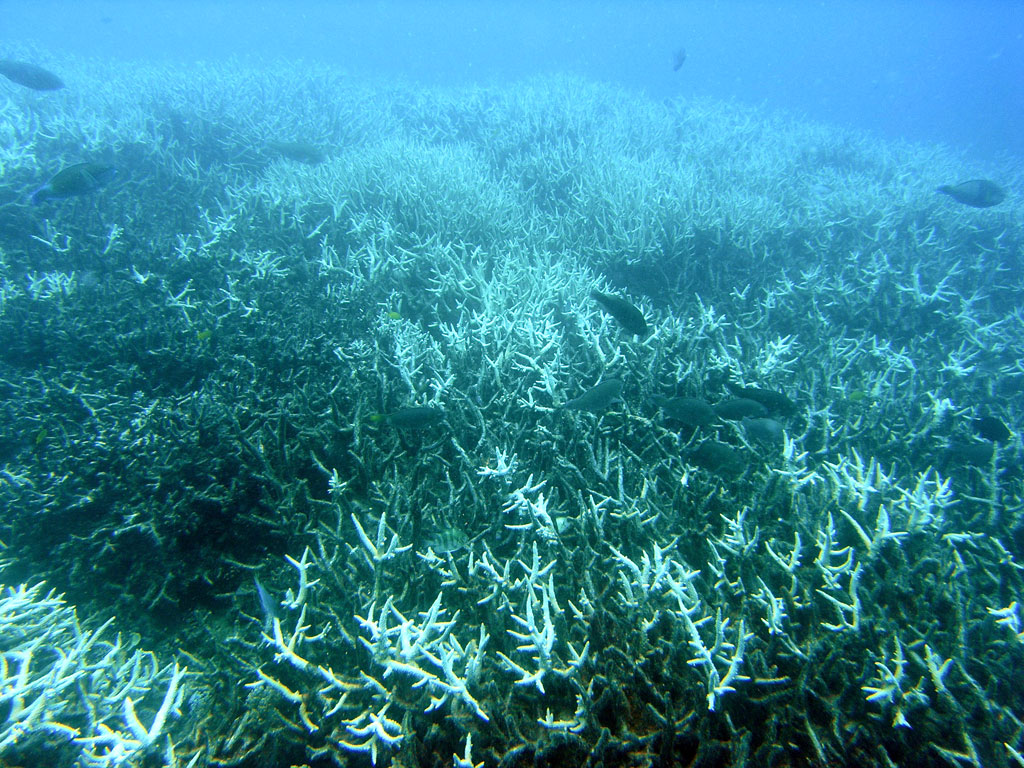By Cassie Roy | Assistant Editor

Image by Acropora, via Wikimedia
The Great Barrier Reef, located off the coast of Australia, is almost at the end of its’ road as it bleaches away its’ remaining color.
The coral reef is approximately 500,000 years old. As of 1998, the reef was filled with beautiful colors that is a result of the 600 types of hard and soft coral that are stacked on each other to create the reef. Over the past 20 years, a process called bleaching has slowly replaced these colors with a solid white coating.
The process of bleaching occurs when the oceans waters raise in temperature, sometimes by just a few degrees. According to the great barrier reefs website, when the water gets too warm the coral excrete the algae that lives inside them which causes the coral to turn completely white. As a result, the coral is also no longer living. The reef currently stretches about 1,400 miles long and losing this destroys the homes, food, and mating grounds for all varieties of fish.
According to Heather Conn, Paleontology professor, “It’s predicted that 90% will be gone in our student’s lifetime.” Conn visited the reef in its’ prime back in 1994 during a three-month study abroad program through her school. Her two children often beg her to take them before the reef is officially gone. “I want to remember it the way I saw it,” said Conn.
Climate change is happening before our very eyes. There is hope, however, of slowing down the process. “We need to acknowledge that it’s happening and really start changing what we’re doing; fix regulations so that we can stop climate change and slow the bleaching of our oceans,” said Conn.
Comments are closed.